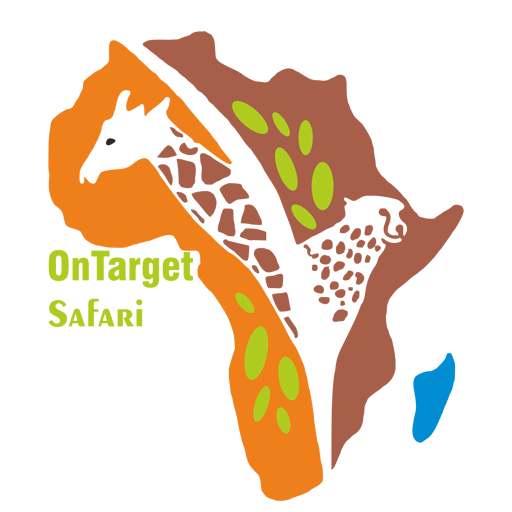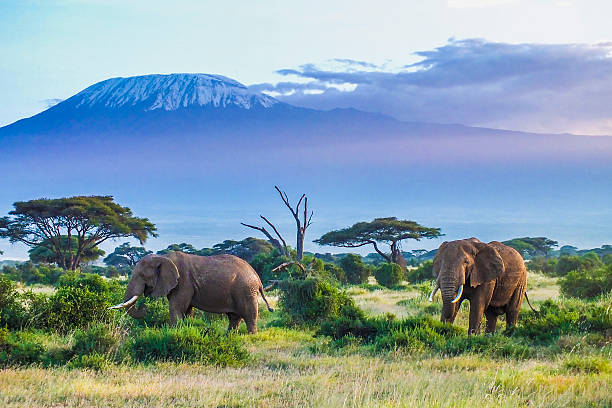Introduction to Mount Kilimanjaro
Mount Kilimanjaro, standing at 5,895 meters (19,341 feet), is the highest mountain in Africa and the tallest free-standing mountain in the world. Located in northern Tanzania, near the Kenya border, this iconic peak is part of Kilimanjaro National Park, a UNESCO World Heritage Site.
Famous for its three volcanic cones—Kibo (the highest), Mawenzi, and Shira—Kilimanjaro attracts thousands of climbers, adventurers, and nature lovers each year. Despite its towering height, Kilimanjaro requires no technical climbing skills, making it one of the most accessible summits for trekkers worldwide.
Tourist Attractions on and Around Kilimanjaro
1. Kilimanjaro Summit (Uhuru Peak) – The Highest Point in Africa
- The final destination for climbers, Uhuru Peak, offers breathtaking sunrise views above the clouds.
- Trekking to the top provides a once-in-a-lifetime experience with stunning landscapes, glaciers, and unique wildlife.
2. Kilimanjaro Climbing Routes
There are seven main trekking routes, each offering a different experience:
- Marangu Route – Known as the “Coca-Cola Route,” it’s the only one with hut accommodations.
- Machame Route – The most scenic and popular route, also called the “Whiskey Route.”
- Lemosho Route – Offers the best acclimatization and stunning landscapes.
- Rongai Route – The only route approaching from the north side, less crowded.
- Northern Circuit Route – The longest and most remote route with high success rates.
- Shira Route – Starts higher up, requiring good acclimatization.
- Umbwe Route – The steepest and most challenging route, recommended for experienced climbers.
3. Kilimanjaro’s Unique Ecosystems
Climbing Kilimanjaro is like walking from the equator to the Arctic in a few days. The mountain has five distinct climate zones:
- Cultivation Zone (800m – 1,800m): Rich farmland, villages, and coffee plantations.
- Rainforest Zone (1,800m – 2,800m): Lush jungle with monkeys, birds, and exotic plants.
- Moorland Zone (2,800m – 4,000m): Open grasslands, giant lobelias, and Senecio plants.
- Alpine Desert Zone (4,000m – 5,000m): Rocky, dry landscapes with extreme temperatures.
- Arctic Summit Zone (5,000m – 5,895m): Snow, glaciers, and thin air at the top of Africa.
4. Shira Plateau – A Scenic High-Altitude Plain
- A vast volcanic plateau offering spectacular views and a great place for acclimatization hikes.
5. Chala Crater Lake – A Hidden Gem
- A beautiful, turquoise-colored crater lake on the southeastern slopes of Kilimanjaro.
6. Materuni Waterfalls & Coffee Tours
- Located near Moshi, this area offers breathtaking waterfalls and local coffee farm tours run by the Chagga people.
7. Kikuletwa (Chemka) Hot Springs
- A natural hot spring oasis near Moshi, perfect for relaxing after a hike.
Best Time to Visit Mount Kilimanjaro
While Kilimanjaro can be climbed year-round, the best seasons for trekking are:
- January – March: Less crowded, colder at the summit, great for snow lovers.
- June – October: The most popular time, with dry and clear weather.
- April – May & November: Rainy seasons, fewer climbers, but muddy trails.
Tribes with the Most Tourist Attractions
1. Chagga Tribe (Mount Kilimanjaro Region)
- Known for: Being the main inhabitants of the Kilimanjaro region.
- Tourist Experience:
- Coffee farm visits – Learn about traditional coffee processing.
- Cultural tours – Explore Chagga caves, once used as hiding places during tribal wars.
- Materuni waterfalls – A refreshing trek through Chagga villages.
2. Maasai Tribe (West of Kilimanjaro)
- Known for: Their semi-nomadic lifestyle, colorful shukas, and warrior traditions.
- Tourist Experience:
- Visit Maasai villages and learn about their traditional customs and cattle herding.
Information and Facts About Mount Kilimanjaro
1. General Facts
- Location: Northern Tanzania, near Moshi town.
- Height: 5,895 meters (19,341 feet) – The highest point in Africa.
- Park Name: Kilimanjaro National Park.
- First Ascent: 1889 by Hans Meyer and Ludwig Purtscheller.
- Type: A dormant stratovolcano with three volcanic cones (Kibo, Mawenzi, Shira).
- Trekking Duration: 5 – 9 days, depending on the route.
2. Interesting Kilimanjaro Facts
- No technical climbing is required – It’s a “walkable” mountain, making it ideal for trekkers.
- The summit is called Uhuru Peak, meaning “freedom” in Swahili.
- It is one of the Seven Summits, the highest mountains on each continent.
- About 35,000 people attempt to climb Kilimanjaro each year, with success rates varying by route.
- The glaciers on Kilimanjaro are shrinking, and scientists predict they may disappear in a few decades due to climate change.
3. Unique Cultural Traditions
- Mount Kilimanjaro is sacred to the Chagga people, who believe spirits reside on the mountain.
- The traditional Kilimanjaro dance and songs are performed to motivate climbers before their trek.
- Climbing rituals: Some climbers carry a Tanzanian flag to plant at the summit as a sign of accomplishment.
Accommodation – Best Hotels Near Kilimanjaro
There are many lodges, hotels, and camps around Kilimanjaro, especially in Moshi and Arusha. Some of the best options include:
Luxury Hotels & Lodges
- Kaliwa Lodge – A beautiful eco-lodge with stunning views of Kilimanjaro.
- Aishi Machame Hotel – A luxury lodge near the Machame route.
- Kilimanjaro Wonders Hotel (Moshi) – A modern hotel with great amenities.
Mid-Range Hotels
- Parkview Inn (Moshi) – Affordable and comfortable with a great view.
- Chanya Lodge – A great mid-range option with excellent hospitality.
Budget & Backpacker Stays
- The Secret Garden (Moshi) – A cozy hostel for backpackers.
- We Travel Hostel – A budget-friendly option with a good traveler community.

